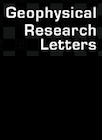 |
Active faulting induced by slip partitioning in Montserrat and link with volcanic activity: New insights from the 2009 GWADASEIS marine cruise data
Nathalie Feuillet, Frédérique Leclerc, Paul Tapponnier, François Beauducel, Georges Boudon, Anne Le Friant, Christine Deplus, Jean-Frédéric Lebrun, Alex Nercessian, Jean-Marie Saurel, Valentin Clément
Geophys. Res. Lett., 37, L00E15, doi:10.1029/2010GL042556, 2010.
|
Abstract.
New high-resolution marine data acquired aboard R/V Le Suroît was used to map active normal faults offshore Montserrat in greater detail. The main faults of the Montserrat-Havers fault zone have cumulative scarps up to 200 m high, and offset sedimentary layers by hundreds of meters. They are arranged in a right-stepping, en-echelon, trans-tensional array, which confirms that they accommodate the left-lateral component of motion resulting from slip partitioning of oblique convergence along the volcanic arc. They cut across Montserrat's recent volcanic complex. Faulting and fissuring exerted control on the position of andesitic domes, which are aligned along the N110°E average fault trend. The ~10 km-long fault segments that cross the island could produce damaging, M~6 events comparable to the shallow, 16 March 1985, Mw~6.3 earthquake that ruptured a submarine, N140°E striking, left-lateral fault near Redonda.
Download the paper (© American Geophysical Union): 
Related paper: [Beauducel et al., 2005; Feuillet et al., 2010b; Leclerc et al., 2010; Bazin et al., 2010]
